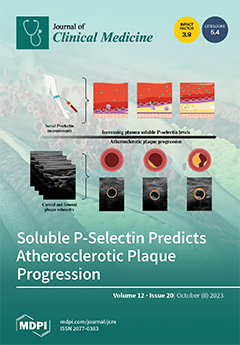(1) Background: Diabetic retinopathy (DR) remains the leading cause of low vision and blindness in young adults of working age. Although the most important risk factors—such as the duration of diabetes mellitus (DM) and glycemic control measured by HbA1c—are known, the effects of lipids are not as clear. The aim of the present study is to analyze the effects of lipids on the development of DR. (2) Methods: This is a retrospective study of a population of 175,645 DM2 patients, during the period 2010 to 2020, in which the effects of different lipid factors are studied. (3) Results: The variables that most influenced the development of DR in our study, based on significance and cumulative hazard (CH), were arterial hypertension (CH 1.217,
p < 0.001), HbA1c levels (CH 1.162,
p = 0.001), microalbuminuria (CH 1.012,
p < 0.001), LDL-C cholesterol (CH 1.007,
p = 0.012), TC/HDL-C index (CH 1.092,
p < 0.001), No-HDL-C/HDL-C index (CH 1.065,
p = 0.002), the use of statins (CH 1.001,
p = 0.005), and body mass index (CH 1.007,
p < 0.001). (4) Conclusions: LDL-cholesterol, TC/HDL-C, and No-HDL-C/HDL-C indices are related to the development of DR, and there is a protective effect of HDL-cholesterol and the use of fibrates.
Full article






